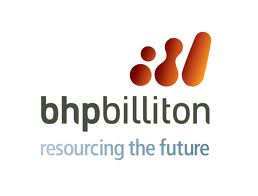 November 24, 2014
November 24, 2014
- BHP Billiton is now targeting US$4 billion of annualised productivity gains in its core portfolio by the end of the 2017 financial year, a US$500 million increase on previous guidance.
- Improved capital productivity will allow planned investment to be reduced from US$14.8 billion to US$14.2 billion in the 2015 financial year and to US$13 billion in the 2016 financial year with no change to expected production growth.
- In Copper, productivity initiatives including low cost debottlenecking projects are expected to offset grade decline over the medium term.
- In Coal, we have re-established our competitive advantage by closing high-cost capacity and sustainably reducing costs.
BHP Billiton today increased its target for productivity gains within its core portfolio and provided new guidance that highlighted its ability to reduce investment without compromising growth. It also provided updates on its Copper and Coal businesses.
BHP Billiton Chief Executive Officer Andrew Mackenzie said: “By significantly simplifying the portfolio the proposed demerger will allow us to redesign BHP Billiton and create an organisation that supports better productivity. The Group’s core assets generated more than 96 per cent of its operating profit in the 2014 financial year, so we can cut complexity and lower costs without losing the benefits of scale and diversity.
“Put simply, we can organise a company that operates 12 large, core assets differently to one with 30 operated assets of varying sizes across a broader range of commodities. We can bring senior management closer to the operations, reduce duplication and cut functional costs to maximise shareholder value,” Mr Mackenzie said.
“By focusing on the productivity of our largest businesses, we can deliver a step-change improvement in performance. Since announcing our plans, we have been able to define the potential benefits in more detail. We are now targeting annualised productivity-led gains of at least US$4 billion within the core portfolio by the end of the 2017 financial year – an increase of US$500 million on previous guidance. This includes a minimum reduction in cash costs of US$2.6 billion per annum.”
Mr Mackenzie added: “Our commitment to a solid A credit rating and a progressive dividend policy has underpinned sector-leading shareholder returns. From this strong foundation we will strike the right balance between investment in high return opportunities and returning cash to shareholders.
“Improved capital productivity gives us additional flexibility. We are reducing the cost of bringing on new production and can lower our investment without slowing volume growth. As a result, we will reduce planned capital and exploration expenditure from US$14.8 billion to US$14.2 billion in the 2015 financial year and expect to invest US$13 billion in the 2016 financial year,” he said.
Maximising operating and capital productivity in Copper
The outlook for copper remains strong. Industry production will be increasingly challenged by structural factors including grade decline and higher strip ratios, with the availability of power and water a significant constraint in several countries. This is likely to result in a significant supply deficit by 2018.
BHP Billiton is not immune to these challenges, but the Company is well positioned to respond. Operational performance continues to improve, with unit costs at Escondida expected to fall by 30 per cent in the three years to the end of the 2015 financial year. Meanwhile productivity initiatives, including low cost debottlenecking projects at Escondida, Spence and Olympic Dam, are expected to offset grade decline within the Copper business over the medium term. And longer-term growth projects at Olympic Dam and Spence could support total copper production capacity of well over 2.0 Mtpa with first quartile average C1 costs.
After three years of strong growth at Escondida, production is expected to fall in the 2016 financial year as a result of significant grade decline. This is expected to mark the low point in production for the remainder of the decade. The life extension of the Los Colorados concentrator and the completion of the Water Supply Project in 2017 will allow Escondida to run three concentrators and maintain production for a decade, without the need for any major investment.
Annual capacity at Olympic Dam is expected to increase by approximately 50 kt from the 2018 financial year upon completion of a low cost debottlenecking project, which will also significantly reduce unit costs. Over the longer term, BHP Billiton is evaluating a low-risk underground expansion with significantly lower capital intensity than the previous open cut design. This has the potential to deliver over 450 kt of copper production a year at first quartile C1 costs by the middle of next decade.
Improving productivity and sustainably lowering costs in Coal
In metallurgical coal, high-cost, uneconomic supply has remained resilient although we do expect to see an increasing number of production cuts, particularly in the United States. Given robust underlying demand growth for premium hard coking coals, pricing for our products is likely to be well supported in the medium and longer term.
The thermal coal market remains well supplied, prolonging the weaker pricing environment. While demand from key importing regions remains steady, prices are unlikely to respond until uneconomic supply exits the market.
BHP Billiton’s Coal business has re-established its competitive advantage by closing high-cost capacity and sustainably reducing costs. All of our Coal operations remain cash positive despite the low price environment and are well placed for margin expansion when prices are expected to recover in the medium term.
Productivity in the Coal business has improved significantly in the last two years, with unit costs cut by 37 per cent in metallurgical coal and by 21 per cent in energy coal. The Group is targeting a further 10 per cent reduction in unit costs at Queensland Coal in the 2015 financial year and a 15 per cent decline in unit costs at New South Wales Energy Coal by the end of the 2016 financial year.
